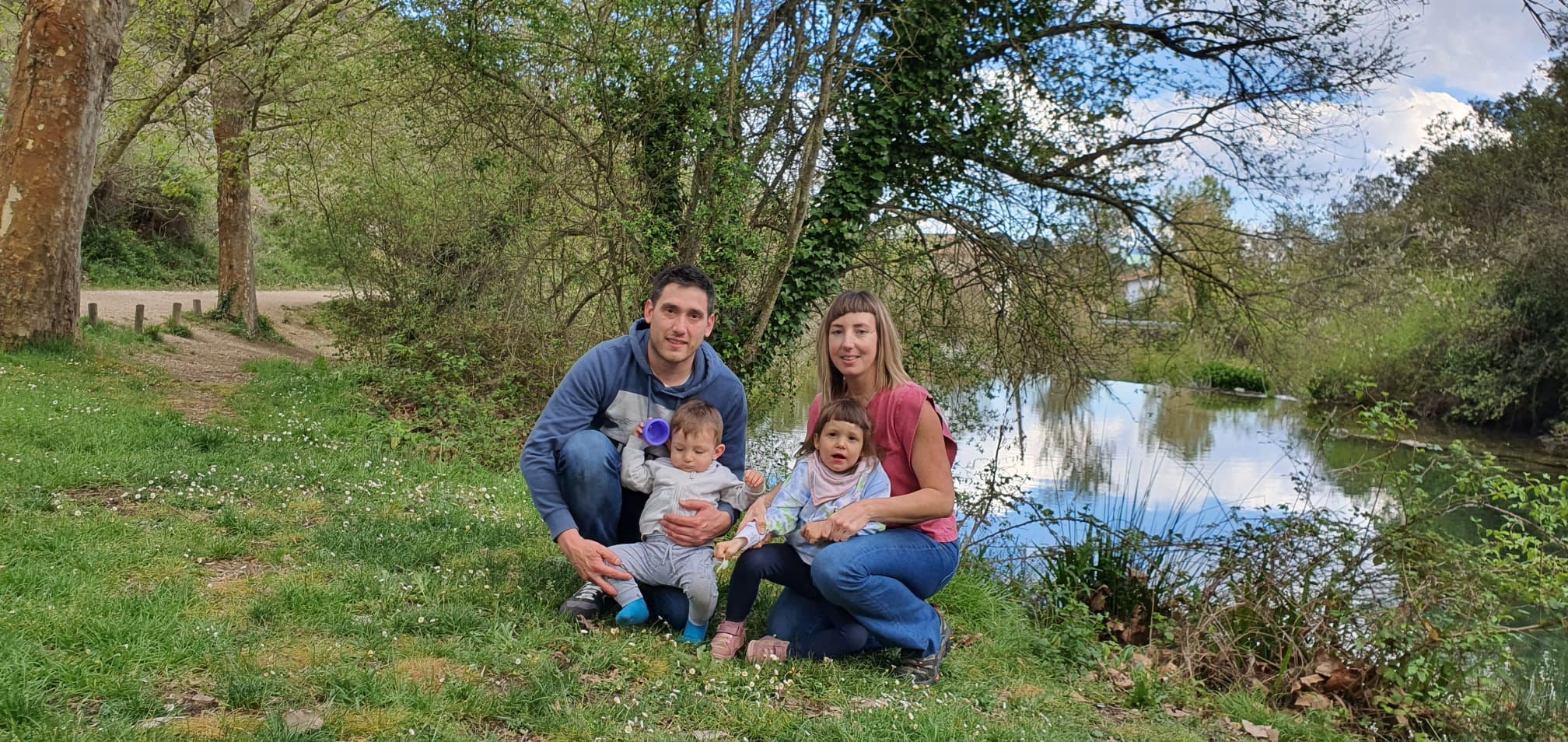The earth revolves around the sun, but the sun revolved around us when our first daughter, Uxue, who is now almost 4 years old, was born. After the first diagnosis of "Global Developmental Delay", came the second diagnosis of "possible ASD" (autism spectrum disorder) and, finally, that of "MUTATION IN THE AGO1 GENE". This gene is known as the "Argonaute gene". It sounds Greek, doesn't it? But the harsh reality is that it exists, and the problem is that a mutation in this gene causes a very rare disease.
This disease causes intellectual disability, autistic traits and epilepsy. We had gone into the neuropaediatric clinic to get the results of a trio genome study they had carried out on us (N.D.R. trio refers to gene sequencing of daughter, mother and father), and we left with this diagnosis. The usual thing for this study is to come back with - nothing, i.e. no genetic alterations. But for us, WE HAD WON THE LOTTERY. The mutation in our daughter's AGO1 gene was DE NOVO, that is, us parents do not have it. In fact, we have another 1-year-old son who is completely healthy. And we left the consultation with three sheets of paper in English, and no further information on what to do or where to go. We had to translate those pages, to realise that this disease had a very wide range of disorders, that no two cases are the same, and the uncertainty of our daughter's future.
After a month of constant searching on the internet, we found Creer (State Reference Centre for the Care of People with Rare Diseases and their Families). We had left a neuropaediatric clinic with this diagnosis and they didn't tell us about its existence? We believe that, when you leave a consultation with a diagnosis of these characteristics, we should have been guided and informed about all the resources available to us. That is why we believe that the Ministry of Health should establish a protocol for action in the diagnosis of a rare disease. The fact is that, thanks to Creer, our daughter was assessed by a number of professionals. After the assessment, they advise you on whether there are aspects that can be improved (from indications to necessary therapies), they help you with bureaucratic issues (paperwork/support), and also psychological help if you need it. A team of 100. I missed a 0.
We have been looking for information for a long time, we have been looking for information about the AGO1 disease, but we could not find the association called AGO2 (N.D.R. The association was renamed "AGO Alliance" in June 2023, hopefully it can now be found!). This association includes the AGO1 and AGO2 mutations, being called AGO2 because most of the diagnosed cases correspond to the latter mutation (N.D.R. Diagnosed cases are approximately equally split across both genes).
To the Creer team, we thank you for everything. We will come back. But above all, for helping Uxue and for having found this association. We are happy and excited to be able to share "our path" with families who are going through the same thing, in order to support each other. To help and be helped. This is the best therapy. A new world has opened up for us. To date, we know of two families in Spain who have a child with this disease, one in Alicante and the other in Valencia. In addition, we have found a family in Florida and another in Poland, whose children are affected by the same variant of AGO1 that our daughter has. The family in Florida has a 22 year old daughter who is cognitively 5 years old. Reality check. It's been a long road, but now we are on the right track.
Meanwhile, we are still immersed in this constant hustle and bustle of paperwork (disability, dependency, child benefit, large family, parking card for people with disabilities, grant/aid procedures), therapies, medical appointments one after the other... never ending. And most importantly, all the dedication and work that comes with having a child with special needs.
Uxue has an intellectual disability, is diagnosed with ASD, epilepsy, sleep disorder, has hyperactive behaviour... She has a disability of 69% and severe dependence. She does not speak, she makes 4 verbal approximations. We have to dress/undress her, bathe her, feed her, change her nappy (she is not yet potty trained). In the street she often runs away from us without looking back, without direction. That's what we are there for, we don't have the eyes for the attention and dedication that Uxue requires. You don't know about the existence of this parallel world, no matter how much people tell you or tell you about it, until you experience it.
And here we are, fighting for what belongs to our daughter, because the state does not make things easy for us. They are the ones who should provide us (when you receive a diagnosis of a rare disease/special need) with more help, information, and speed up the bureaucratic procedures. There is still a lot to change. Therefore, it is not a bad thing to let them know. We continue this way with the Asociación Navarra de Autismo (ANA), who have helped us a lot since the first moment. We would also like to thank, for their great work, the Neuropaediatrics Team of the University Hospital of Navarra.
All of us united, with strength, and without losing the course in "our way": WE WILL GET THERE.
Reprinted with permission from CREER (State Reference Center for the Care of Persons with Rare Diseases and their Families)
